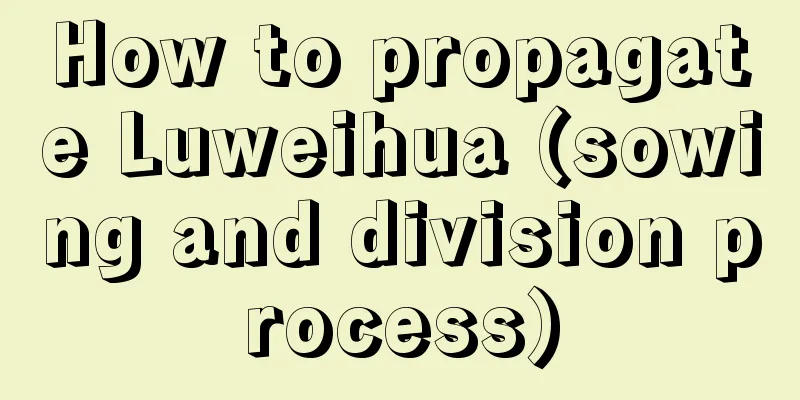Potato planting technology in winter

|
Potatoes are cultivated in all parts of China. Generally speaking, different varieties of potatoes differ in growth cycle , yield and quality. If you want to grow potatoes in winter, you must master the planting techniques, which can help improve the yield and quality of potatoes. Below, I will introduce the winter planting techniques of potatoes. Let’s take a look. 1. Variety selection When planting potatoes in winter, you should choose varieties that are cold-resistant, have wide adaptability, short growth cycle and high yield. These varieties usually have strong cold resistance and better growth performance, and can grow normally in low temperature environments in winter. 2. Land preparation and fertilization Choose fertile, loose and breathable soil. It is best to choose a plot where potatoes have not been planted in the past 2-3 years to reduce the occurrence of diseases and pests. After preparing the land, apply base fertilizer, preferably farmyard manure, which can make the soil loose and breathable, and more suitable for potato growth. Note that farmyard manure must be fully decomposed before application, otherwise root burn will occur. 3. Planting seeds The planting time of winter potatoes varies by region, but it is usually done when the temperature is steadily above 0℃. In the Yangtze River Basin, the sowing period of winter potatoes is generally from December to early February of the following year. Generally, ridge cultivation is adopted, with single or double row planting. When sowing, make sure the eyes of the seed potatoes are facing upwards and covered with an appropriate amount of soil. 4. Temperature control Potatoes are cold-resistant, but seeds need to be above 0 degrees to germinate. If the temperature drops below 0 degrees, the seeds may freeze to death and fail to germinate. Therefore, when planting potatoes in winter, make sure the local temperature is above zero degrees. 5. Cultivation and soil cultivation After all the seedlings have grown, inter-cultivation should be carried out to make the soil in the tuber layer loose and breathable, which is conducive to root growth and tuber enlargement. Before closing the rows, the soil should be cultivated together with topdressing to thicken the tuber layer and prevent the tubers from being exposed. 6. Irrigation management The temperature is low in winter and soil moisture evaporates slowly, but the amount of irrigation still needs to be controlled reasonably. Irrigation should be carried out during periods of higher temperatures to avoid frost damage to potato seedlings due to water at low temperatures. At the same time, it is necessary to ensure that there is no shortage of water in the fields, especially during the potato swelling period, and water needs to be replenished in time. 7. Loosening the soil and weeding Potatoes have high requirements for soil. Loosening the soil can improve soil permeability and promote the root system to absorb water and nutrients. Timely loosening of the soil and weeding can prevent weeds from competing with potato seedlings for nutrients and ensure the healthy growth of potatoes. 8. Pest and disease control The main potato diseases and pests in winter are late blight, black shank, ring rot, as well as cutworms, mole crickets , aphids, etc. We should adhere to the prevention and control methods of focusing on prevention and combining comprehensive prevention and control. The above is an introduction to potato planting techniques in winter. Potato seeds require temperatures above 0°C to germinate. If the natural temperature remains above 0°C, potatoes can be planted directly in the field. But if the temperature is low, you need to consider greenhouse cultivation.
|
<<: Winter cucumber planting technology
>>: Wintersweet cultivation methods and precautions
Recommend
How many days does green onion grow?
The growth process of green onions, from sowing t...
What are the cultivation methods and precautions of jasmine?
Jasmine cultivation method Jasmine belongs to the...
How to propagate pomegranate
1. Cutting 1. Spring and autumn are the two best ...
Where is it suitable to plant Atractylodes macrocephala
Atractylodes macrocephala planting area Generally...
How long does it take for rose cuttings to take root?
Rose cutting rooting time The best time for rose ...
Things to note when using Bacillus thuringiensis
Bacillus thuringiensis, also known as Bacillus th...
How to grow potatoes
1. Site selection Choose a plot with good drainag...
How to grow roses in spring
1. Suitable temperature It likes warmth, so the t...
Is planting water chestnut profitable? Planting costs and profits
Is it profitable to grow horseshoe crabs? Water c...
When is the best time to prune yellow fruit?
Pruning effect of yellow fruit For yellow-barked ...
Greenhouse vegetable planting technology
1. Level the land The first step in greenhouse ve...
How to propagate Dieffenbachia
1. Water insertion method This breeding method is...
How to make okra, how to make okra delicious
1. Cold salad When making cold dishes, prepare th...
Can I grow green radish at home?
1. Can I raise it? Of course it can be grown at h...
The value of echinacea
The ornamental value of Echinacea Echinacea grows...









